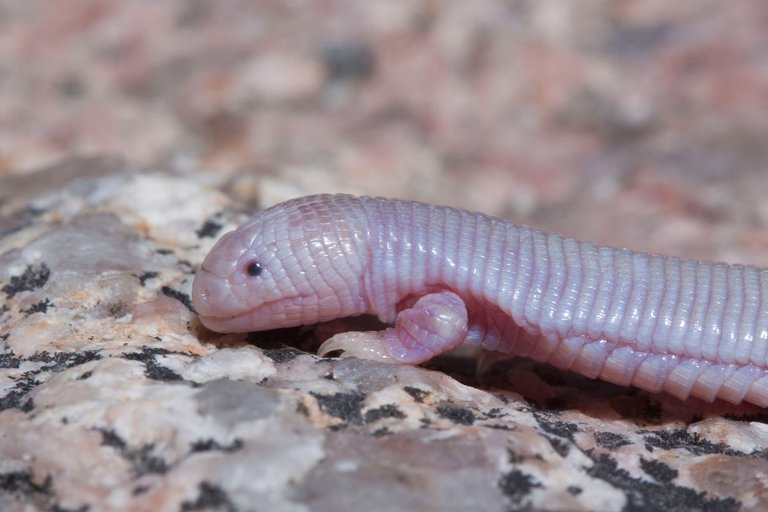The Mexican Mole Lizard - (Not A Lizard Nor A Snake)
Our planet is home to unique species of organisms walking, flying, crawling, swimming and even standing still and the majority of these organisms are yet to be described by western science. Even though we have a lot of species, a lot of them are similar look alike, and live in similar ways, not all are unique. Some organisms are unique and still look similar to pre-existing species like Carcinization which has to do with repeated evolution of organisms that are crab like but aren't crabs. Some also have unique features like the Squamate which are scaled reptiles that look like snakes but aren't.
There are a lot of bizarre animals in our world but I will be looking at one that caught my attention which is the Mexican Mole Lizard. That lizard is kinda weird with its pink, wrinkly color having feet making it look like a lizard, but with long body that crawls the earth surface making it look like a snake but then it burrows into the ground giving it the mole look. It is a combination of traits making it unique and it is a member of the Amphisbaenian which is made up of about 200 species of organisms that are typically legless reptiles that are neither lizards not snakes.
When I throw the question of what a lizard is, the response would most likely be reptiles with four legs like the western fence lizard, chameleons, geckos, and so on, and when I mention snakes, the first thing that comes to mind is that poisonous reptile with no legs willing to attack at all time. Snakes do not have definite eyelids while lizards do, so we could mention a lot of differences between the both but when we talk about Amphisbaenian, they are similar to snakes with no legs until they need legs and making them look slightly like lizards such as the Mexican Mole Lizard.
The Mexican Mole Lizard is one of the 4 groups of Amphisbaenian to have any legs as they retain the pectoral girdle which is needed for the functionality of the front leg. The legs of the Mexican Mole Lizard are very strong with claws that have a shovel shape for digging. They only possess front legs with no back legs which means they can only burrow with their front legs and when underground, they rely on concertina locomotion which has to do with the bending and straightening of the body cavity allowing them to inch their way through the sand.
Similar to earthworms, the ring scale on their body allows them move forward using the accordion-like motion and just like earthworms, the mexican mole lizards can lose part of their body like their tail and still keep going just to distract predators. Snakes do not have holes in their head for hearing while lizards do but the mexican mole lizard can ear without an external ear. It uses an inward fold of its skin which would vibrate when it there is sound wave which is then transmitted to the cochlea, so it uses its skin to ear.
With these characteristic attributes it can survive and live similar to a snake, lizard, and a mole like steady front arm, this is a very unique animal. This is an example of the numerous species of organisms that are unique but share familiar adaptation with other organisms.
Read More
- https://www.sciencedirect.com/topics/pharmacology-toxicology-and-pharmaceutical-science/squamate
- https://bmcecolevol.biomedcentral.com/articles/10.1186/s12862-018-1303-1
- https://www.ucl.ac.uk/museums-static/obl4he/vertebratediversity/amphisbaenia.html
- https://www.wired.com/2014/12/absurd-creature-of-the-week-mexican-mole-lizard/
- https://userweb.ucs.louisiana.edu/~brm2286/locomotn.htm
- https://royalsocietypublishing.org/doi/10.1098/rspb.2014.3034
- https://www.pnas.org/doi/10.1073/pnas.69.9.2714
- https://animalia.bio/mexican-mole-lizard?form=MG0AV3


Thanks for your contribution to the STEMsocial community. Feel free to join us on discord to get to know the rest of us!
Please consider delegating to the @stemsocial account (85% of the curation rewards are returned).
Thanks for including @stemsocial as a beneficiary of this post and your support for promoting science and education on Hive.